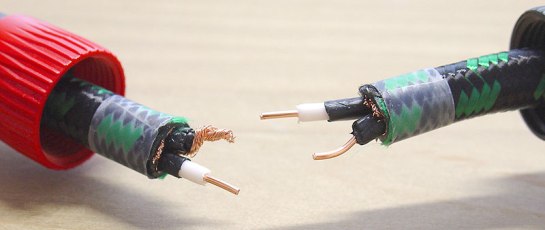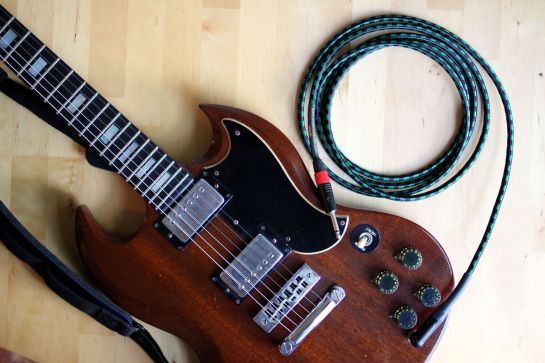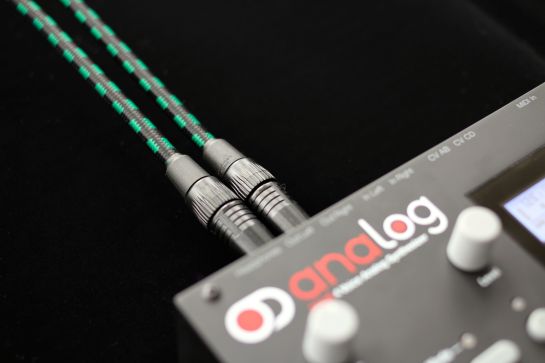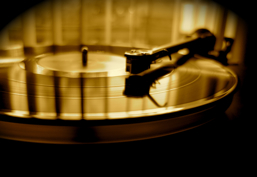
Solid Core Copper Cable by Evidence Audio
The way audio cables are constructed can certainly make a difference to their sonic characteristics. Over the past several years I have been comparing the sound transmission characteristics of different copper conductors. In addition to the conductors, different geometries, dielectric material, and shielding can make a cable sound different. While these can influence the sound, I feel the primary sonic impressions I have been hearing have to do with the interaction of conductors carrying an audio signal. Using both stranded copper and solid core copper audio cables in a variety of setups has allowed me to hear the differences.

Stranded Copper Wire photo from Jimmy’s Junkyard
We use stranded copper wire in pro audio applications for a couple of reasons. One main reason is that flexibility is important when dressing microphone and instrument cables. A stranded cable will be much more robust when repeatedly coiled up and unwound. The many strands of thin copper can withstand more bending than a single solid core copper wire. It’s the transmission characteristics that differ. With all those strands the signal tends to jump from strand to strand, and with a single solid core conductor this cannot occur. The sound characteristic of stranded copper vs solid core may seem minute, but any well trained ears should hear the difference. This example from Evidence Audio compares stranded monster cable vs. their solid core cable using a bass guitar.

Gibson SG with Evidence Solid Core Lyric HG
Having heard the difference between stranded copper and solid core copper in my pro audio monitoring chain, I was curious to examine the sonic difference with electric instruments. For this, I employed the help of a 1973 Gibson SG and a Dr. Z MAZ 18 (non-reverb version) tube amplifier. After playing for some 30 minutes with a Mogami stranded copper cable, I switched to the Evidence Lyric HG. My first impression was that a haze had been lifted from my guitar sound. As I continued to dig into this new-found sonic experience I also noticed that my SG had become more responsive to my playing. Rather, a dynamic contrast now clearly existed and I was in control of the shading.
Switching back to the stranded copper cable immediately sounded blurred. The word that comes to mind is distortion, or disruption of the original signal. The guitar sound was now less pure. I want to avoid using words like darker or brighter, because what I was hearing had to do with the signal integrity. Yes, the stranded cable might sound darker, but I feel blur is a better word. On the other hand, the solid core guitar cable was clear and did not adding anything to the original signal.

Analog Synthesizer with Evidence Audio Solid Core Cable
To further examine the sonic benefits of solid core copper cable, I pulled out an analog synthesizer. The Elektron Analog Four is capable of producing a variety of sounds with its analog oscillators, filters, and beyond. For this test I chose to use a simple sawtooth waveform and a sub oscillator from this analog synthesizer. After using the stranded Mogami cable for the initial listening, I swapped it out for the Evidence Lyric HG balanced cable. The clarity of the sawtooth wave when transmitted over solid core wire was evident, but when I began adding sub harmonic oscillators, the difference truly stood out. Sonic integrity comes to mind. While adding sub harmonic oscillators to the original sawtooth waveform I was very pleased to experience a more (obvious and clear) layered sound.
These solid core cables from Evidence audio truly allowed me to hear the various harmonic additives I was creating on this synth. Moving back to the stranded copper showed me that the full tonal characteristic of the synth was lessened to a degree. Adding in the sub harmonic oscillator with a stranded cable is easy to hear, but the delineation of harmonic content (clarity) was not as good as with the Evidence Audio cable.
Happy Listening!





